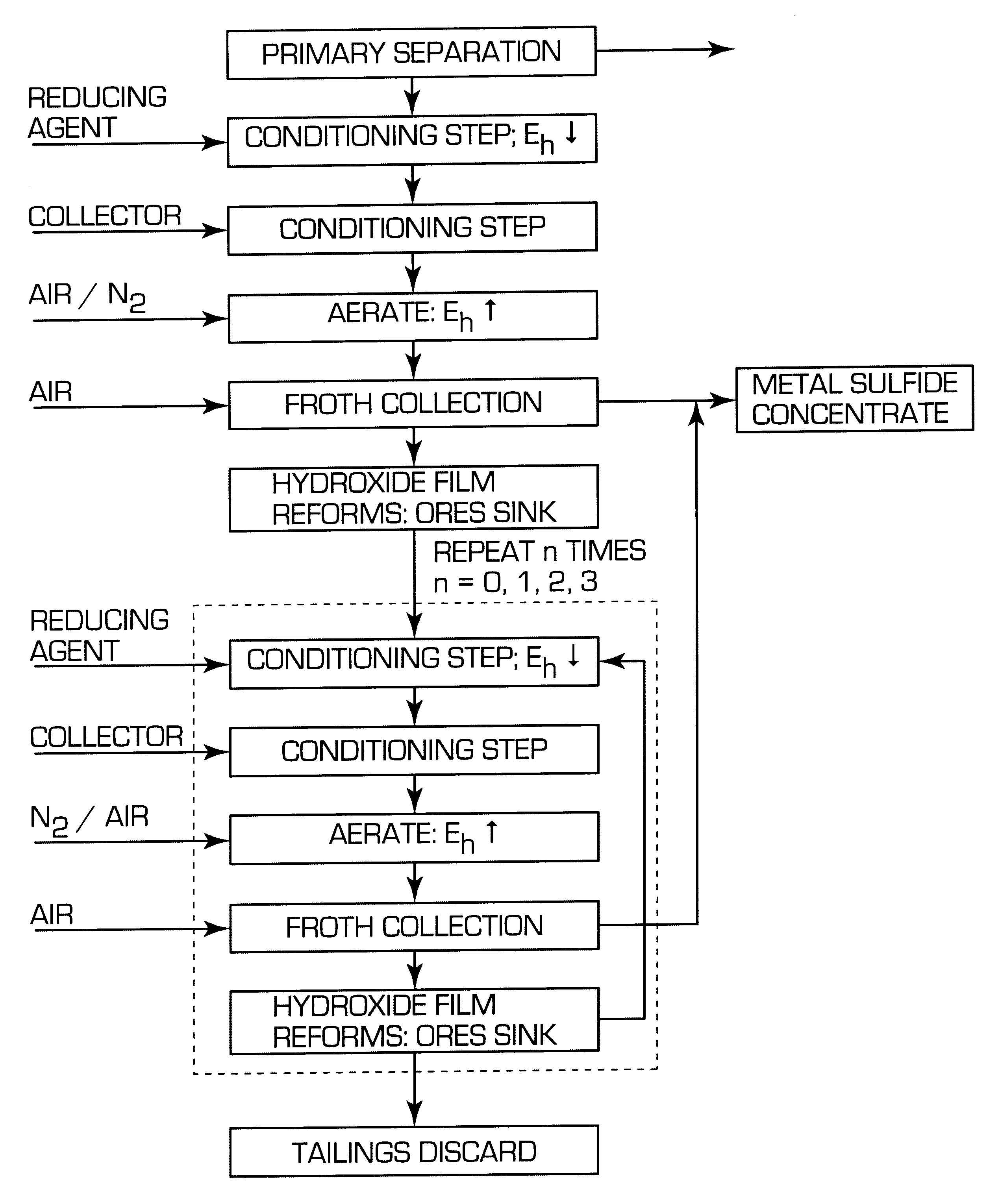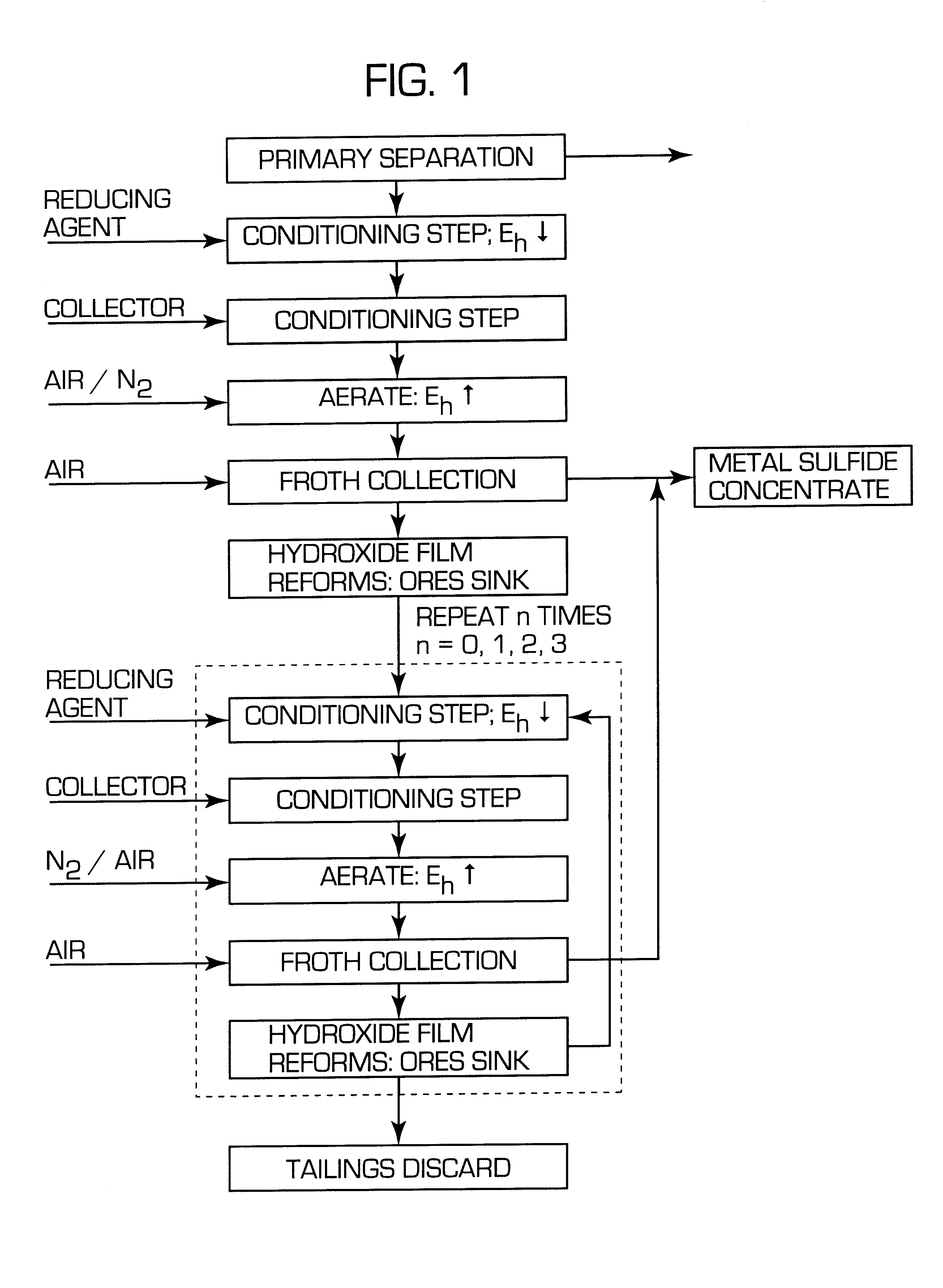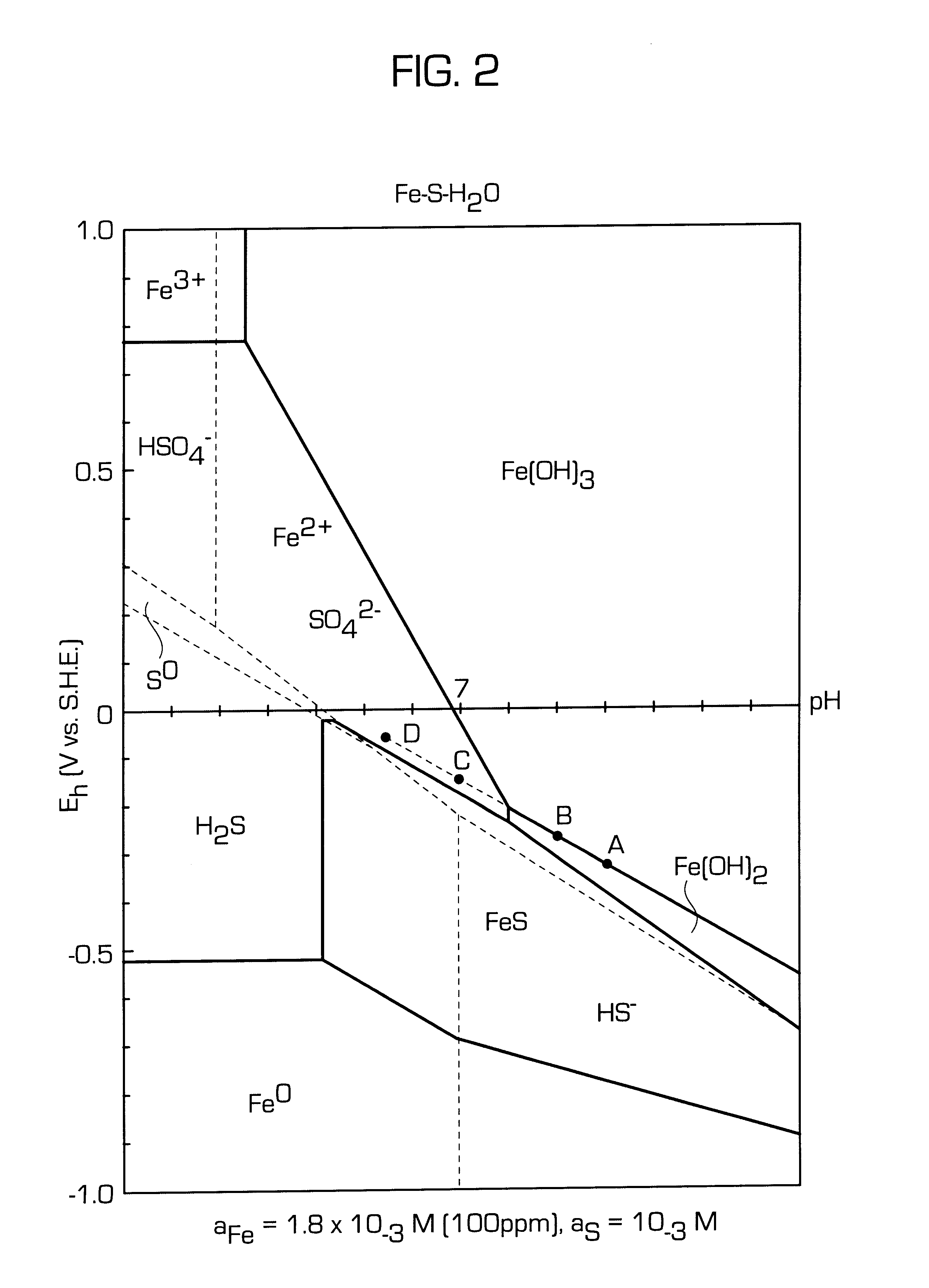Separation of minerals
a technology of minerals and sulphide, applied in the direction of flotation and solid separation, etc., can solve the problem of poorly floatability of conventional sulphide flotation reagents
- Summary
- Abstract
- Description
- Claims
- Application Information
AI Technical Summary
Benefits of technology
Problems solved by technology
Method used
Image
Examples
example 1
After the reference tests had been conducted, the flotation procedure used in the comparative Example 1 was repeated except that the process pulp was conditioned in accordance with invention before flotation. Thus sufficient sodium dithionite was added to lower the pulp potential to -400 mV (SHE) and the pulp was conditioned for 5 minutes under nitrogen. The gas was then turned off and collector was added and conditioned for 2 minutes. The flotation gas at a rate of 8 l / min was then changed to a mixture of 50 / 50 vol % nitrogen and air and the pulp potential raised to a value above the threshold for xanthate adsorption (approximately, 150 mV SHE in this system). Once above this threshold the sulphides floated strongly and a series of concentrates were collected. The results using the new process are compared with those using the conventional method in Table 2:
To determine when the potential was in a range suitable for flotation a battery operated millivolt meter connected to a platin...
PUM
| Property | Measurement | Unit |
|---|---|---|
| particle size | aaaaa | aaaaa |
| particle size | aaaaa | aaaaa |
| particle size | aaaaa | aaaaa |
Abstract
Description
Claims
Application Information
 Login to View More
Login to View More - R&D
- Intellectual Property
- Life Sciences
- Materials
- Tech Scout
- Unparalleled Data Quality
- Higher Quality Content
- 60% Fewer Hallucinations
Browse by: Latest US Patents, China's latest patents, Technical Efficacy Thesaurus, Application Domain, Technology Topic, Popular Technical Reports.
© 2025 PatSnap. All rights reserved.Legal|Privacy policy|Modern Slavery Act Transparency Statement|Sitemap|About US| Contact US: help@patsnap.com



